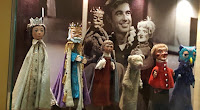Pennsylvania’s Laurel Highlands, recognized for its sheer beauty, inspires visitors to take the long way home, seek out the hidden path and wander in search of the endless possibilities the area offers. laurelhighlands.org
Laurel Highlands was home to native tribes, most notably the Algonquin, Iroquois,Monongahelaand Lenape, for thousands of years prior to first European contact. It was their pathway across the Allegheny Mountains to the Ohio River Valley, Nemacolin’s Trail, named after a Delaware chief, that facilitated settlers’ western movement. This “National Road” became pivotal to westward expansion and colonial history. Following the newer 68-mile Laurel Highland’s Scenic Byway will lead you to the majority of the sites and venues from outdoor activities to unique historic sites. nationalroadpa.org
Fort Necessity National Battlefield is credited with being the site of the first battle of the French and Indian War. Washington’s first military engagement and only surrender occurred here. This wilderness fort is only 53-ft. around within a wooden stockade. The French demolished the fort in 1754. The visitor center provides a good overview. nps.gov/fone
Westmoreland County was established in 1773 and is home to the state’s steepest slope, 7 colleges and universities and the renowned Westmoreland Museum of American Art. Founded by Mary Marchand Woods, the collection consists of 3500 objects of fine and decorative art representing regional art spanning 400-years. The certified LEED silver structure was designated the “Best Designed Museum in PA”. thewestmoreland.org
Latrobe, the Steelers’ summer home, incorporated as a city in 1999 but was settled in the 1800s. It is filled with singular sites and eateries and was home to golfer Arnold Palmer and comedian Jackie Mason during a 3-year period when he served as a rabbi. latrobelaurelvalley.org
In 1904 the banana split was created in Latrobe by pharmacist apprentice David Strickler at the Tassel Pharmacy. The popularity of the banana split prompted Strickler to have a special serving dish made and this iconic dish was depicted on a postage stamp in 2016. Visitors can order one built to the original specifications at the Valley Dairy Restaurant. Valleydairy.net
Dining in Latrobe is an experience at DiSalvo’s Station. The former train station is a National Register Landmark and was chosen one of 11 restaurants in the country “Most Worthy of a Destination Stop” by the Culinary Institute of America. The Italian cuisine is fresh and creative and the service exemplary. disalvosrestaurant.com
Saint Vincent Parish, the first Catholic Parish west of the Allegheny Mountains, was founded in 1790. The college was established in 1846. A highlight of a campus tour is (1891-1905) Saint Vincent Archabbey Basilica, the oldest Benedictine Monastery in the US and one of the world’s largest. The 230-ft. long floor is handhewn Carrera marble and the walls are filled with priceless sacred artworks. saintvincentarchabbey.org
The Fred Rogers Center at Saint Vincent College honors the fact that Latrobe was Mr. Rogers original neighborhood. The center’s archive holds more than 16,000 items and the “Life Before the Sweater” gallery recounts his early life and exhibits feature objects from his 895 shows. Special items include original puppets, his shoes and, of course, his iconic sweaters. He too is pictured on a postage stamp. Rogers is interred in the nearby Unity Cemetery but he lives on as a seated sculpture in James Rogers Park. Visitors can have a seat and a photo on the bench beside him. fredrogerscenter.org
The Foster and Muriel McCarl Coverlet Gallery, one floor below the center, is presenting an outstanding exhibit until January 11, 2019. “Blood Cotton: Legacies of Slavery and Exploitation in the Decorative Textile Industry”, explores cotton as a driving force in the American economy and the continuation of slavery. mccarlgallery.org
Frank Lloyd Wright’s most recognizable home is Fallingwater, a stunning blend of art and nature. The 1930’s structure, built over a waterfall, was constructed by area craftsmen using regional materials as a 1,500-acre weekend home for a Pittsburgh executive. The award-winning house is a National Historic Landmark and Commonwealth of Pennsylvania Treasure. The on-site Fallingwater Café is Green Restaurant Certified. Tours are offered and reservations are highly recommended. Fallingwater.org
Seven-miles from Fallingwater is a second Wright home, Kentuck Knob. This Usonian masterpiece is also the location of a Sculpture Garden. Tours are available via the website. kentuckknob.com
An epic journey deserves epic accommodations and Laurel Highlands spotlights the world-class Nemacolin Woodlands Resort. Named after the Delaware chief who was instrumental in assisting in colonists navigation of early trails, so too does the resort offer 2,000-acres of region-related activities including the 36-hole Pete Dye Mystic Rock golf course, Shooting Academy, fly fishing, climbing wall, dueling ziplines and 20-mile Off-Road Driving Academy.
The Wildlife Academy boasts an Equestrian Center, animal nursery and animal habitats. Should you bring your own favorite animal you can avail yourself of the Pet Resort & Spa. At a leisurely pace you can visit the Lady Luck Casino, Hardy Family Art Collection and numerous shops on property.
Accommodations are appointed with designer amenities and luxurious linens. Dining selections include the fine dining ForbesFive-Star and AAA Five Diamond Lautrec as well as several more casual options. nemacolin.com
On September 11, 2001 forty passengers and crew foiled a terrorist strike, planned to hit the US Capitol, by attacking the cockpit. The Flight 93 Memorial honors those heroic individuals with a Memorial Plaza, Wall of Names, artifacts and a 93-ft. tower. The memorial is located at the site of the crash and the tour is self-guided. nps.gov/flni/index.htm
Laurel Highlands is a Pennsylvania gem hidden in plain sight. visitpa.com/regions/laurel-highlands
NOTE: Fallingwater has just been selected the most beautiful house in PA.





















































